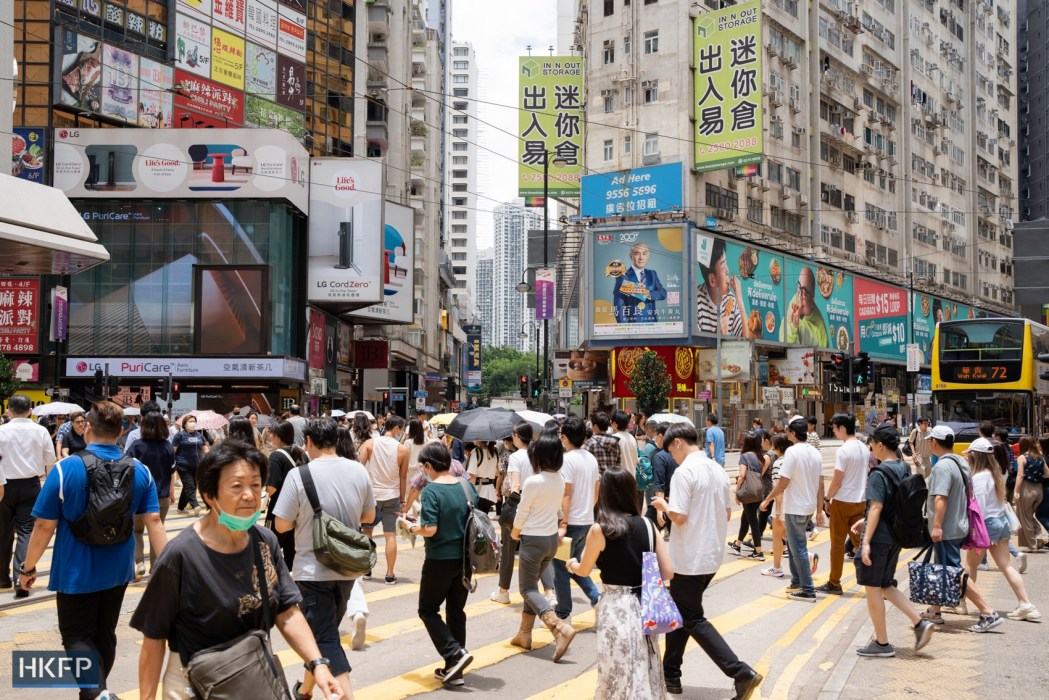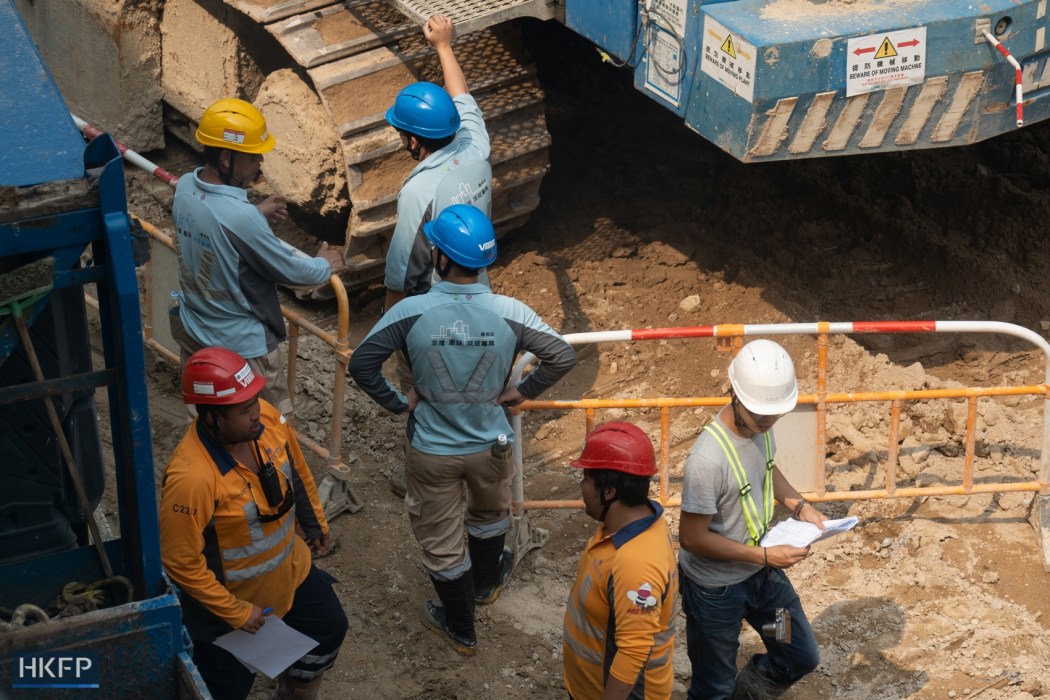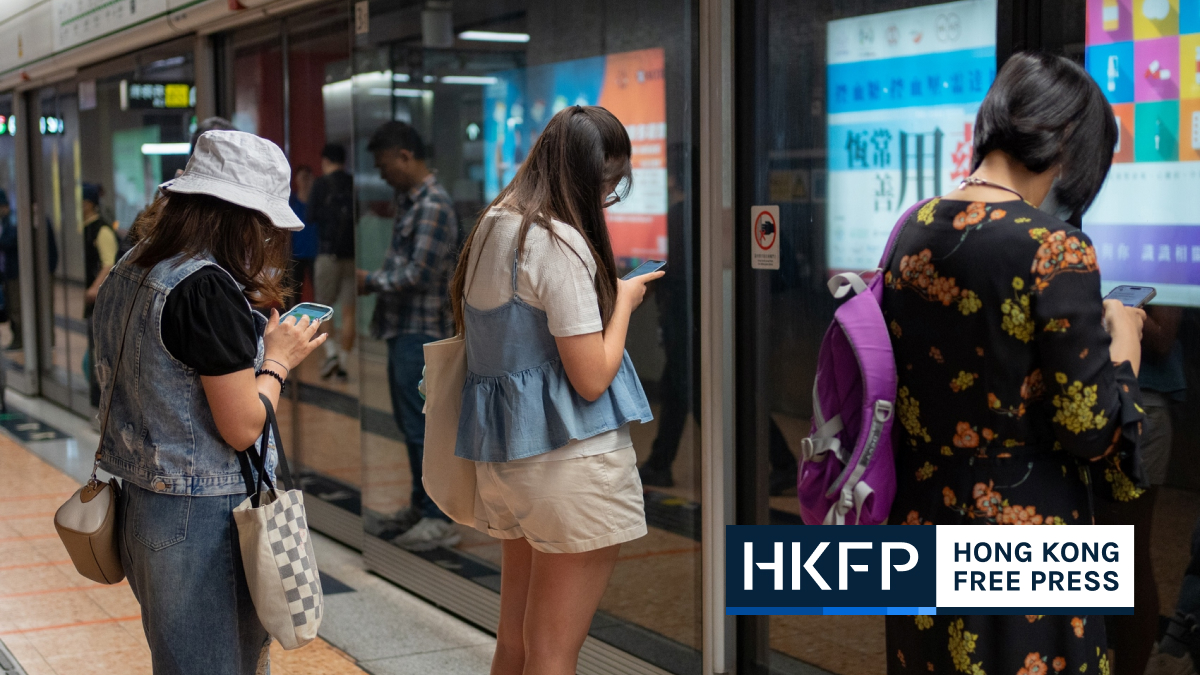Hong Kong’s population has risen to 7.5 million, according to provisional mid-year estimates, buoyed by a 64 per cent increase in people who do not live in the city full-time. Meanwhile, immigration statistics for 2023 showed that resident departures outnumbered arrivals by 291,000 until mid-August.

People seeking work in Hong Kong on a temporary basis were expected to account for almost a third of a population inflow that would increase the city’s population to 8.19 million by mid-2046, according to government estimates released on Tuesday.
In a separate statement on Tuesday, the Census and Statistics Department reported a 2.1 per cent year-on-year population increase of 152,000 residents in mid-2023, increasing overall population to 7.5 million.
See also: How to measure Hong Kong’s mass exodus
The rebound in population figures was attributed in part to people from mainland China being admitted to Hong Kong “through various schemes.” The department also cited the return of Hong Kong residents who went abroad during the pandemic as one of the reasons for the rebound in population figures.
“[W]ith the moderation of the epidemic situation and the gradual relaxation of anti-epidemic control measures, normal travel between Hong Kong and the Mainland and other parts of the world has been progressively resumed,” the statement read.
The number of “usual residents” – that is those who have spent at least three months in the city within six months before or after a chosen point in time, or non-permanent residents in Hong Kong at that time – grew by 0.8 per cent year-on-year to 7.25 million according to Tuesday’s figures. However, that number was still below the 7.33 million in 2021.
“Mobile residents” – or those who have spent between one and three months in Hong Kong in the six months before or after a point in time – rose by 64.2 per cent, to 248,700, this year compared to mid-year 2022 data.
Meanwhile, the net outflow of 291,000 residents marked Hong Kong’s largest since the beginning of the Covid pandemic in January 2020, when the Immigration Department began keeping records.
Temporary imports
The government has, in recent years, launched several talent and labour importation schemes that would “provide an important impetus to facilitate population growth” in the following two decades, according to the Census and Data Department’s statement on population projections.
But those workers, whom the government expects would mostly arrive from mainland China, would only be in Hong Kong on a temporary basis as they are not entitled to gain permanent residency status under the schemes.

Until 2046, the net inflow of population would be comprised of 890,000 One-way Permit holders, 510,000 non-permanent residents admitted through entry schemes, and 240,000 foreign domestic helpers, according to the department.
Among those schemes is a recent initiative to import around 20,000 workers in a bid to alleviate the labour crunch in the construction, transport and aviation sectors, but labour groups have criticised the plan for bypassing scrutiny of union leaders and ignoring the concerns of local workers.
Ageing local labour force
The ageing of the local labour force is expected to continue, as the proportion of elderly persons aged 65 and above is projected to increase from 20.5 per cent to 36 per cent – meaning more than one in three people will be elderly residents.
As such, the labour force participation rate is also projected to decrease from 57.2 per cent in 2021 to 51.6 per cent in 2046.
The city’s fertility rate is also expected to remain low, with the average number of children per 1,000 women increasing to 938 in 2046, up from 772 in 2021.
On Tuesday, a Hong Kong-based non-profit found that childless couples were on the rise, with not liking children and the large responsibility of raising kids the most commonly cited reasons for not wanting to have children or having just one child.
Support HKFP | Policies & Ethics | Error/typo? | Contact Us | Newsletter | Transparency & Annual Report | Apps
Help safeguard press freedom & keep HKFP free for all readers by supporting our team

LATEST FROM HKFP
HKFP has an impartial stance, transparent funding, and balanced coverage guided by an Ethics Code and Corrections Policy.
Support press freedom & help us surpass 1,000 monthly Patrons: 100% independent, governed by an ethics code & not-for-profit.










